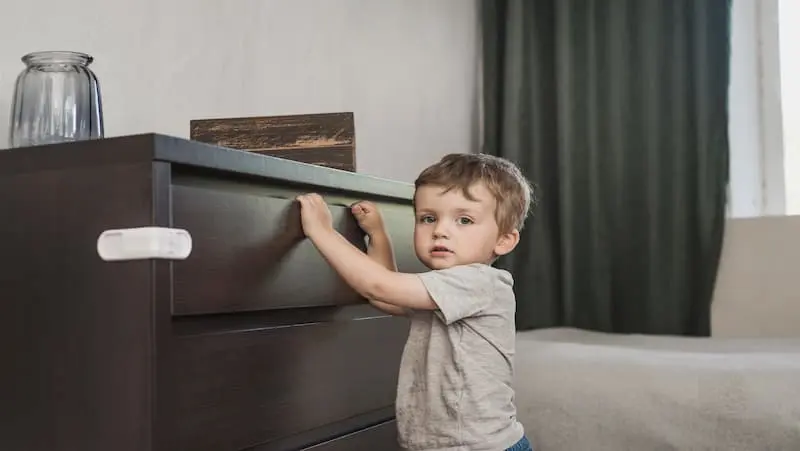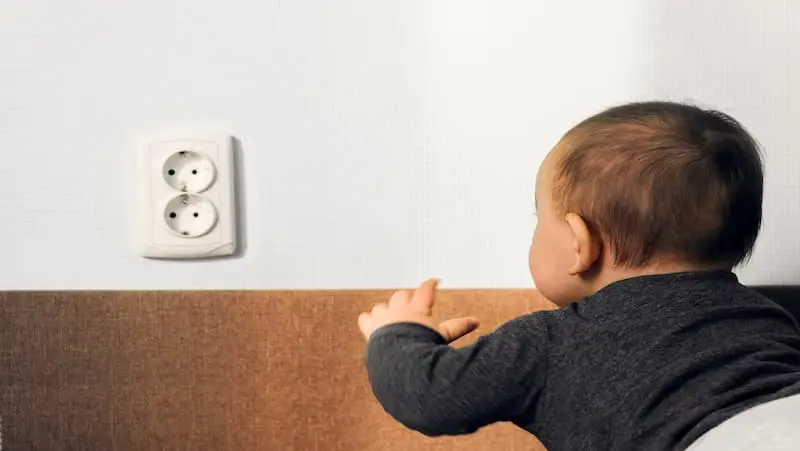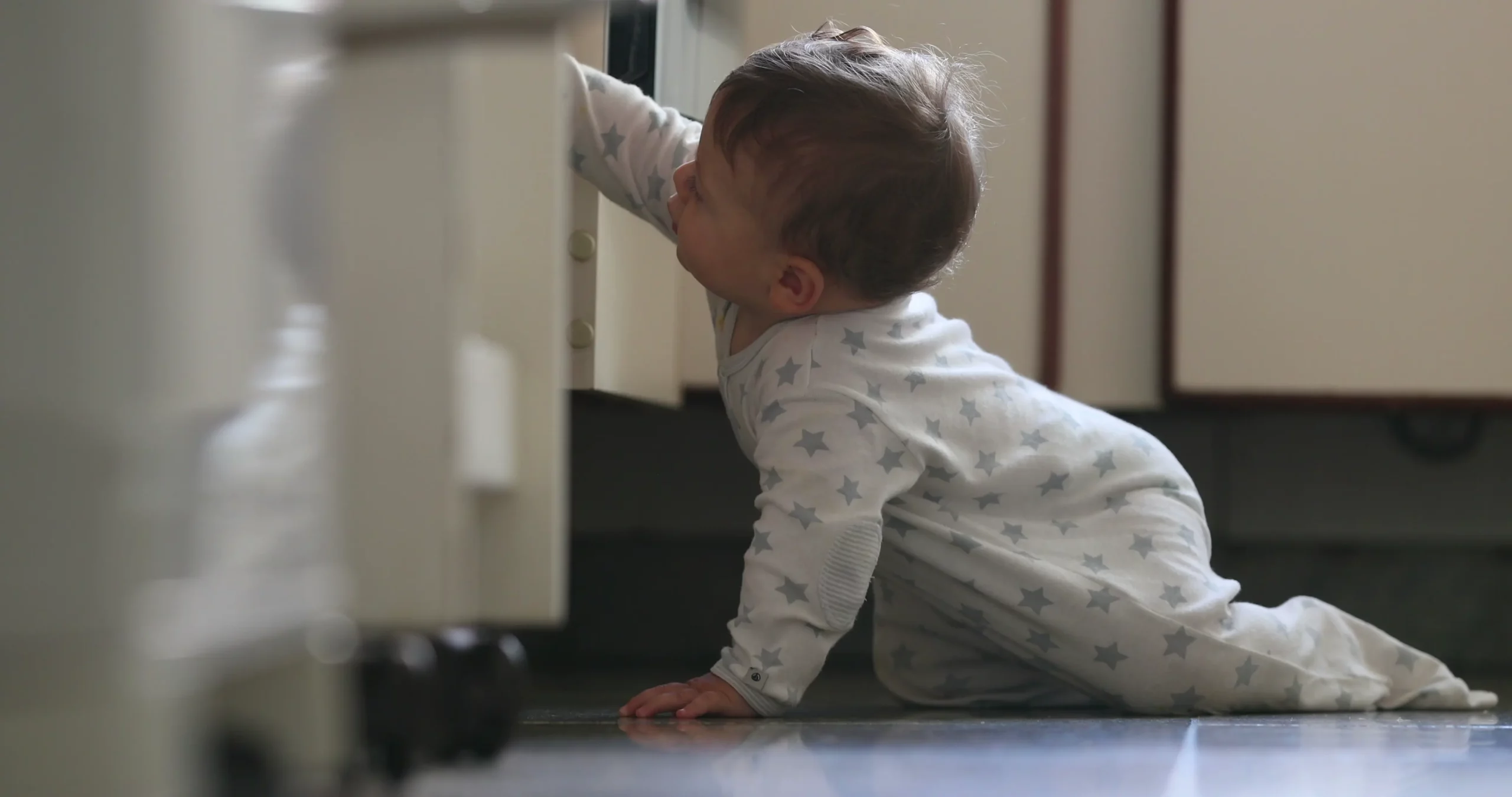As parents, ensuring the safety and well-being of our little ones is always a top priority. One crucial aspect of parenting is babyproofing, which involves creating a safe environment for our babies to explore and grow without encountering unnecessary hazards. In this comprehensive guide, we will provide you with the ultimate babyproofing tips to help you safeguard your home and keep your little one out of harm’s way.
Table of contents
Room-by-Room Babyproofing Guide

a. Nursery
The nursery is the heart of your baby’s domain, so it’s important to make it a safe haven. Start by choosing a safe crib, ensuring it meets all the necessary safety standards. Opt for a firm mattress and avoid using blankets, pillows, or stuffed animals in the crib. Secure any furniture and heavy objects that could topple over, and manage cords and window coverings to prevent strangulation hazards.
b. Kitchen
The kitchen can be a particularly dangerous area for curious little explorers. Install cabinet and drawer locks to keep potentially hazardous items out of reach. Stove and oven safety is crucial, so use stove knob covers and consider installing a stove guard. Use electrical outlet covers and store cleaning supplies in locked cabinets to prevent accidental ingestion.
c. Living Room and Common Areas
The living room and other common areas should be made safe by installing baby gates to restrict access to potentially hazardous areas. Use furniture corner protectors to prevent injuries from sharp edges. Manage cords from electronics to avoid strangulation hazards, and remove any hazardous decor items that can be easily knocked over or swallowed.
d. Bathroom
The bathroom poses various risks to your little one. Install toilet safety locks to prevent drowning hazards. Adjust the water temperature to ensure it’s not too hot, and use non-slip mats and bathtub safety devices to prevent slips and falls. Store medications and toiletries securely, out of your baby’s reach.
e. Stairs and Hallways
Stairs and hallways can be dangerous, but with the right precautions, you can minimise the risks. Install stair gates at the top and bottom of staircases, secure bannisters and railings, and address any tripping hazards. Proper lighting is also crucial to prevent accidents.
General Babyproofing Tips

In addition to specific room guidelines, there are general babyproofing tips to keep in mind. Identify and remove choking hazards, anchor heavy furniture to the wall, and secure loose cords and cables. Childproof windows and blinds to prevent accidents, and choose age-appropriate toys and safe storage options.
Here are the some below tips you can follow :
1) Objects containing chemicals
Keep everyday items in your home that contain chemicals such as soap and detergent so that they are out of reach of your little one. You can store it in a cupboard by attaching a lock and hasp.
2) Sharp objects
All household furniture that has sharp corners has the potential to injure your little one, especially if it’s within your little one’s reach. We recommend purchasing corner guards or edge protector strips to cover sharp corners on furniture. You should also store other sharp objects like knives and pens in locked drawers.
3) Stop contact
The shape that is like a face with an open mouth sometimes makes your little one want to stick his finger into the socket. Therefore, you need to cover it with furniture such as sofas or safety covers (cover socket).
4) Small objects
Your little one will go through an ‘oral’ phase where he will try to learn about the world around him by putting various objects into his mouth. We advise you to always be aware of small objects in the house and only let your little one play with age-appropriate toys.
Electrical and Fire Safety

Electrical and fire safety measures are vital for a baby proofed home. Cover electrical outlets with outlet covers or safety plugs and keep cords out of your baby’s reach. Install fire and smoke detectors throughout your home, practise safe use of space heaters, and take precautions to prevent electrical accidents.
For better understanding about robotics kits for kids. Read this article!
Outdoor and Car Safety
When it comes to outdoor and car safety, be mindful of potential hazards. Create a safe outdoor play area, secure pools with fences or covers, and always supervise your child near water. Properly install and use car seats, protect against sun and heat with appropriate measures, and ensure the safety of strollers and carriers.
Emergency Preparedness
Being prepared for emergencies is essential for every parent. Create a well-stocked first aid kit, learn CPR, and keep emergency numbers handy. Develop a fire escape plan for your home and familiarize yourself with the poison control hotline. Also, consider babyproofing while traveling to ensure your child’s safety on the go.
Babyproofing Dos and Don’ts

While babyproofing is crucial, it’s important to be aware of common mistakes to avoid. Regularly maintain and reevaluate your babyproofing measures as your child grows and develops new abilities. Strike a balance between safety and allowing exploration to encourage your baby’s development. Lastly, create a supportive environment that encourages learning and growth.
Babyproofing Checklist
Assess each room in your home for potential babyproofing hazards:
- Identify furniture that needs to be anchored to prevent tip-overs.
- Check for sharp edges and corners that can be covered with corner protectors.
- Secure heavy objects and appliances that could be pulled or knocked over.
- Cover electrical outlets and secure cords to prevent electrocution risks.
- Remove or secure choking hazards such as small objects or cords.
- Install safety gates at the top and bottom of stairs or to restrict access to certain areas.
Consider using specific babyproofing products to enhance safety:
- Use cabinet and drawer locks to keep hazardous substances out of reach.
- Install window guards or window stops to prevent falls.
- Choose childproof locks for doors and windows.
- Utilize stove knob covers and oven locks in the kitchen.
- Use outlet covers and cord organizers to manage electrical hazards.
- Install toilet locks and bathtub spout covers in the bathroom.
Implement creative babyproofing ideas to create a safe environment:
- Use non-slip mats in the bathtub and shower to prevent slips.
- Choose window blinds with cordless designs or install cord covers.
- Place baby gates to restrict access to areas with potential hazards.
- Store cleaning supplies and medications in locked cabinets or out of reach.
- Keep small objects, balloons, and plastic bags away from your baby.
- Opt for age-appropriate toys that do not pose choking risks.
Conclusion
Creating a safe environment for your baby is a responsibility that every parent takes seriously. By following these ultimate babyproofing tips, you can significantly reduce the risks and hazards that your little one may encounter at home. Remember to regularly assess and update your babyproofing measures as your child grows. With the right precautions in place, you can provide your baby with a safe and nurturing environment to thrive in.
Also, BrightChamps provides a comprehensive platform for learning about money for kids, offering interactive and engaging resources that teach financial literacy, budgeting, saving, and other essential money management skills.
FREQUENTLY ASKED QUESTIONS(FAQ)
A1: Some essential babyproofing measures include securing furniture to prevent tip-overs, installing safety gates at the top and bottom of stairs, covering electrical outlets, using cabinet locks in the kitchen, removing choking hazards, and creating a safe sleep environment.
A2: It’s recommended to start babyproofing your home before your baby becomes mobile. This can be as early as four to six months when they start rolling over or crawling. It’s best to begin early to ensure you have all the necessary precautions in place as your baby starts exploring their surroundings.
A3: Some common hazards to look out for include sharp edges and corners, electrical outlets, cords and cables, unstable furniture, choking hazards (small objects), chemicals and cleaning supplies, stairs and steps, and unsecured windows and blinds.
A4: To secure furniture and prevent tip-overs, use furniture anchors or straps to attach heavy furniture, such as bookshelves and dressers, to the wall. Ensure that furniture is stable and not easily tipped over. Keep heavier items on lower shelves to prevent top-heavy furniture.
A5: Key electrical safety precautions include covering electrical outlets with outlet covers or safety plugs, securing cords and cables out of your baby’s reach, using cord organizers or cord covers, and avoiding the use of extension cords whenever possible.
A6: In the kitchen, install cabinet locks or latches to keep hazardous items out of reach, use stove knob covers, and secure appliances. In the bathroom, install toilet safety locks, set the water temperature to prevent scalding, use non-slip mats, and keep medications and toiletries out of reach.
A7: When choosing baby gates, consider the area you need to secure. Measure the width of the doorway or stair opening to ensure a proper fit. Select gates that are sturdy, have a secure latch system, and are JPMA (Juvenile Products Manufacturers Association) certified for safety.
A8: To secure cords and blinds, keep them out of your child’s reach by using cord shorteners, wind-ups, or cord clips. Ensure that blinds have cordless or inaccessible cord designs. Consider cordless window coverings for added safety.
A9: To ensure a safe sleep environment, place your baby to sleep on their back in a crib with a firm mattress and fitted sheet. Avoid using pillows, blankets, crib bumpers, or stuffed animals in the crib. Remove any potential suffocation hazards and maintain a comfortable room temperature.
A10: Additional safety considerations for outdoor spaces include creating a fenced play area with no access to pools or bodies of water, securing outdoor furniture and equipment, ensuring playground equipment is age-appropriate and in good condition, and using sunscreen and protective clothing to shield your baby from the sun’s harmful rays.









